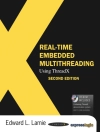Fast and Efficient Context-Aware Services gives a thorough
explanation of the state-of-the-art in Context-Aware-Services
(CAS). The authors describe all major terms and components of CAS,
defining context and discussing the requirements of context-aware
applications and their use in 3rd generation services. The text
covers the service creation problem as well as the network
technology alternatives to support these services and discusses
active and programmable networks in detail. It gives an insight
into the practical approach followed in the CONTEXT project,
supplying concrete guidelines for building successful context-aware
services.
Fast and Efficient Context-Aware Services:
* Provides comprehensive and in-depth information on
state-of-the-art CAS technology.
* Proposes a system architecture for CAS creation and delivery,
discussing service management and active network layers.
* Describes the service lifecycle functional architecture, covering
service authoring, customization, invocation, and assurance.
* Explains system design considerations and details, system
evaluation criteria, test-bed requirements, and evaluation
results.
Fast and Efficient Context-Aware Services is an invaluable resource
for telecommunications developers, researchers in academia and
industry, advanced students in Computer Science and Electrical
Engineering, telecoms operators, as well as telecommunication
management and operator personnel.
Spis treści
Foreword.
Abbreviations.
1. Introduction.
1.1. Context-Aware Services.
1.2. The Context Project.
1.3. Structure of the Book.
1.4. Acknowledgements.
2. Context Awareness and Modeling: Background.
2.1. Some Context Definitions.
2.2. Context-Aware Service.
2.3. Context-Awareness System Research.
2.3.1. Context-Aware Ubiquitous Computing Applications.
2.3.2. Context-Aware Frameworks.
2.3.3. Context-Aware Application Life Cycle.
2.3.4. Context in GRID Computing.
2.3.5. Context-Aware Sensors’ Computing.
2.3.6. Context-Aware Ontologies.
2.3.7. Context in Mobile Systems and Devices.
2.3.8. Context Aware Communications.
2.3.9. Context-Aware Flows.
References.
3. The Service Life Cycle Functional Architecture.
3.1. Introduction.
3.2. Service Life Cycle Model for Context-Aware Services.
3.3. Service Creation.
3.3.1. CAS Authoring.
3.3.2. Service Customization.
3.3.3. Code and Policies Generation Engine.
3.4. Service Management.
3.4.1. Code Distributor.
3.4.2. Code Execution Controller.
3.4.3. Invocation Service Listener.
3.4.4. Service Assurance.
3.5. Conclusions.
References.
4. Context-Aware Services and the Network Layer.
4.1. Network Layer Requirements for Context-Aware Services.
4.2. Current State of Service-Aware Networks and Open Network Interfaces.
4.3. Requirements for Network Context Information Collection and Dissemination.
4.3.1. Access to Local Network Level Information.
4.3.2. Gathering and Disseminating Global Network Information.
4.4. Requirements for Network Level Control.
4.5. Security Considerations.
4.5.1. Implementation Aspects.
4.6. Conclusions.
References.
5. Baseline Technology Review.
5.1. Introduction.
5.2. Open Signaling Approach.
5.3. IFTF For CES Approach.
5.4. DARPA Active Networks Approach.
5.5. Programmable Networks Components.
5.5.1. Node OS: Node Operating Systems.
5.5.2. EE: Execution Environments.
5.5.3. Programmable Management Services.
References.
6. CAS Creation and Management – System Architecture and Design Considerations.
6.1. Introduction.
6.2. Service Layer Overview.
6.2.1. Policy Management Components.
6.2.2. Service Execution Components.
6.2.3. Interfaces Between Service Layer Components.
6.3. Service Layer Implementation Considerations.
6.3.1. Why Policies?
6.3.2. Objectives of the Policy-Based Service Management System.
6.4. Context Policy-Based Service Management System.
6.4.1. On System Components.
6.4.2. Domain-Specific Policies.
6.4.3. Service Assurance.
References.
7. The Service Execution Environment and Context Delivery.
7.1. A Bird’s-Eye View.
7.2. The Active Platform.
7.2.1. The Session Broker.
7.2.2. Execution Environment.
7.2.3. Management of Active Nodes.
7.2.4. DINA Active Packets.
7.2.5. Security.
7.2.6. The IP-Related Brokers.
7.2.7. Vo IP Support: the SIP Broker.
7.2.8. Wireless Support: The WLAN Broker.
7.3. Context Delivery System.
7.3.1. Functional Overview.
7.3.2. Functional Decomposition.
7.3.3. Context Broker Interfaces.
7.4. Conclusions.
References 167
8. System Evaluation.
8.1. The Scenarios.
8.1.1. Work From Anywhere (WFA).
8.1.2. Crisis-Aware Telecommunications Services.
8.1.3. Moving Campus Services.
8.1.4. Testbed and Service Layer Set Up.
8.2. Performance Evaluation.
8.2.1. CPU Load.
8.2.2. Info-Broker Load.
8.3. Conclusions.
9. Conclusions.
9.1. Context-Aware Services.
9.2. Autonomic Communications Vision.
References.
Index.
O autorze
Danny Raz is a member of the computer science department at
the Technion, Israel. His primary research interest is the
theory and application of management-related problems in IP
networks. Danny has published many papers and authored a book in
the area of computer networking. He served as the general chair of
Open Arch 2000, and as a TPC member for many conferences including
INFOCOM 2002-2003, Open Arch 2000-2001-2003, IM-NOMS 2001-2005, and
as an Editor in the Journal of Communications and Networks (JCN).
Arto Juhola has been with Technical Research Centre of
Finland since 2001. He manages the EU IST CONTEXT project
formed by Alex Galis. Arto has written largely red tape and
project proposal aspects, and has contributed to one conference
paper within the EU IST project.
Alex Galis is a Visiting Professor in the
Telecommunications Systems Research Group of the Department of
Electronic and Electrical Engineering, University College London.
He is the author and co-author of more that 125 papers and
technical reports and 4 books in the areas of programmable networks
and services, selfware and autonomic management, context sensitive
communications, programmable GRIDs and ambient networks.
Joan Serrat-Fernandez has worked at Universitat
Politecnica de Catalunya since 1977. Recently, he has participated
in the IST-FAIN, IST-WINMAN and IST-CONTEXT, three EU projects
dealing with management of active networks, IP/WDM and context
aware services respectively. Prof. Serrat is a contributor in
technical, scientific fora and magazines. He is also
co-author/co-editor of four technical books.












